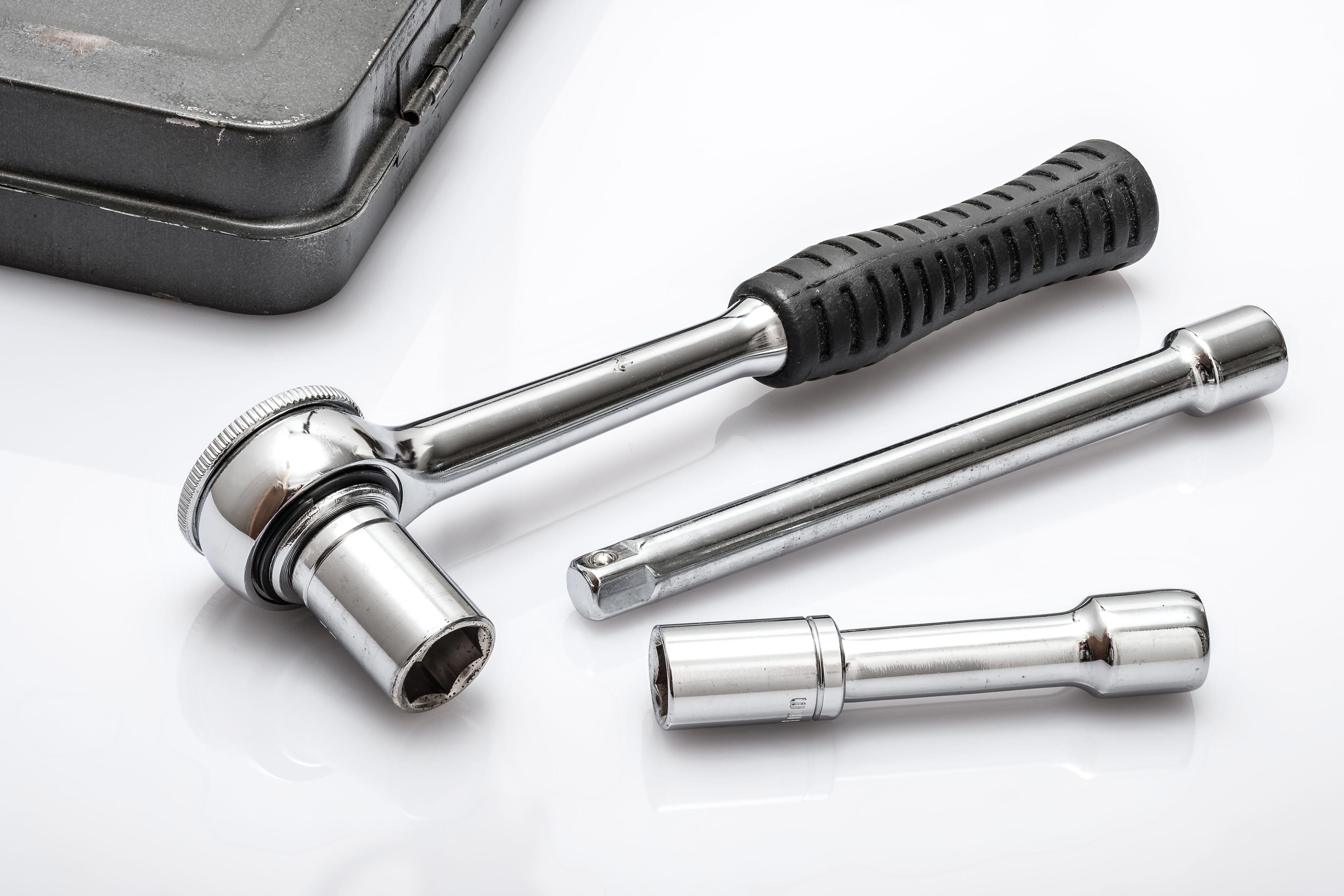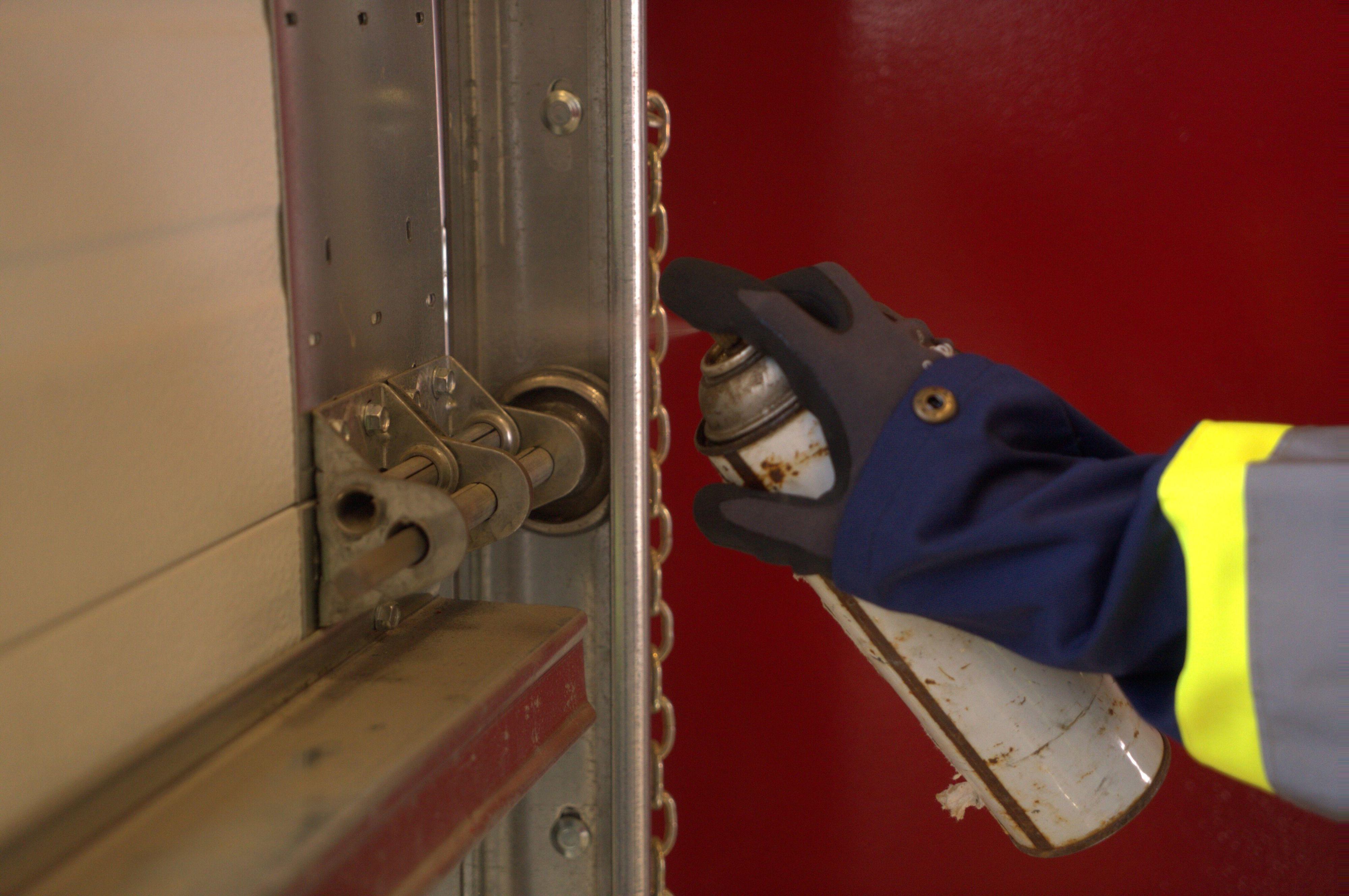Troubleshooting a Squeaky Garage Door
Does your garage door squeak when it opens and closes? If so, a bit of lubricant will likely fix this problem. In under an hour, you should be able to troubleshoot and possibly even eliminate the bothersome noises coming from your garage door. Oftentimes, loose hinges are the top culprits that cause squeaking. If that's the case, with a few simple tools and a bit of time, you can fix it yourself. In the following article, our pros explain how to lubricate your garage door so that it runs smoothly and quietly. However, if you have an older garage door that might be worn out, you will need to consult a Creative Door Services professional for repair or replacement.

Gather some supplies
Before you begin, make sure you have good lighting in the area and gather the following tools:
- A lithium-based or silicone-based lubricant
- A deep socket wrench and a ratchet
- A step ladder
- An old cloth
Don’t make the mistake of using WD-40 or another oil-based product to lubricate your garage door parts, as they aren’t effective. Also, be sure to choose a lubricant that comes in a spray can for easy application.

See what’s squeaking
Start with inspecting your garage door to find the source of the squeaking. Open and close your garage door a few times and see if you can pinpoint where the noise is coming from or if you can spot any wobbling or rusted areas. In all likelihood, the squeaking could be coming from one of the following sources:
- The hinges. In most cases, the hinges are the issue. These hardware components hold together the different sections of your garage door. They include a rod that spins as the door opens and closes, which produces friction and squeaks when not adequately lubricated.
- The rollers. The rollers can be found on either side of the garage door and will also start to squeak when they need lubrication. These components allow the garage door to run up and down the tracks. They’re attached to hinges that are similar to the ones toward the centre of the door and they too need to stay lubricated.
- The tension spring. Although the hinges and rollers are the most likely culprits, tension springs are also serial squeakers. The tension spring overtop your garage door contracts and expands when the door opens and closes. If it doesn’t stay well lubricated, there will be friction and ultimately squeaking.
If your garage door has extension springs instead of a torsion spring, these don’t require lubrication.
Warning: Keep in mind that all garage door springs are under extremely high tension and can cause injury. It’s always best to hire a professional to lubricate them. Read up on the danger of spring repair.
Listen for squeaking in the hinges, rollers, and springs when you perform your test. If you can’t determine where the noise is coming from, there’s nothing wrong with lubricating all these parts, especially if you haven’t done so in a while.
Also, listen for rattling or wobbling hardware when opening and closing the garage door. If you hear it, you’ll likely need to tighten these parts.
Tighten the hardware
Before you lubricate your hinges, it’s wise to tighten any screws and bolts keeping them in place. You can use a socket wrench for this. Just be sure to leave the hardware a little loose to allow for movement. If you notice any damage to the hinges, they'll need to be replaced.
Lubricate the hinges
Now it’s time to arm yourself with your can of spray lubricant. Before you begin, attach the applicator straw onto the sprayer. There are a couple of areas you’ll want to focus on when spraying the hinges. First, there are the pivot points, the spots where the two halves of the hinge pivot. Second, there’s the rod, which extends between the two pivot points. You’ll want to spray along the seam of the rod so that the lubricant can get inside. You may need to spin the rod to expose the seam.
Only one coat of lubricant is required. Wipe away the excess with your rag.

Lubricate the rollers
Maintaining your garage door rollers is a simple and quick task to include in your seasonal maintenance. The part of the rollers you want to lubricate is the ball bearing, which is found at the innermost part of the wheel where it meets the rod. Don’t lubricate the outside of the wheel. If you have plastic rollers, they won’t have ball bearings and won’t require any lubrication.
Don’t lubricate the track either. This is unnecessary and will only cause dirt, dust, and grime to collect on the track, hindering your garage door’s operations. Instead, use a damp cloth to clean the track.
See if you’ve silenced the squeak
Open and close your garage door a few times to distribute the lubricant and hear whether the squeaking is gone. If you're still hearing squeaking on the hinges or rollers, lubricate them a second time or call in a professional to assess to the situation.
To keep your garage door running smoothly, you should lubricate the parts at least twice a year.
When In Doubt, Hire A Professional: Contact Creative Door Services!
Your garage door is a heavy and complex system with hundreds of small moving parts that work together seamlessly. Proper safety precautions must be taken when making adjustments to any door or operator mechanism—especially as it relates to spring tightening. A garage door technician will be able to lubricate all the parts of your garage door that require it and perform any needed repairs and maintenance. For more troubleshooting advice, or to have your garage door serviced, contact the team at Creative Door Services today.
Request Quote
Starting a new project? Get a free quote on a custom door solution within 24 hours.
Request Service
Installation, maintenance or repair needs? Our experienced team is ready to help.

